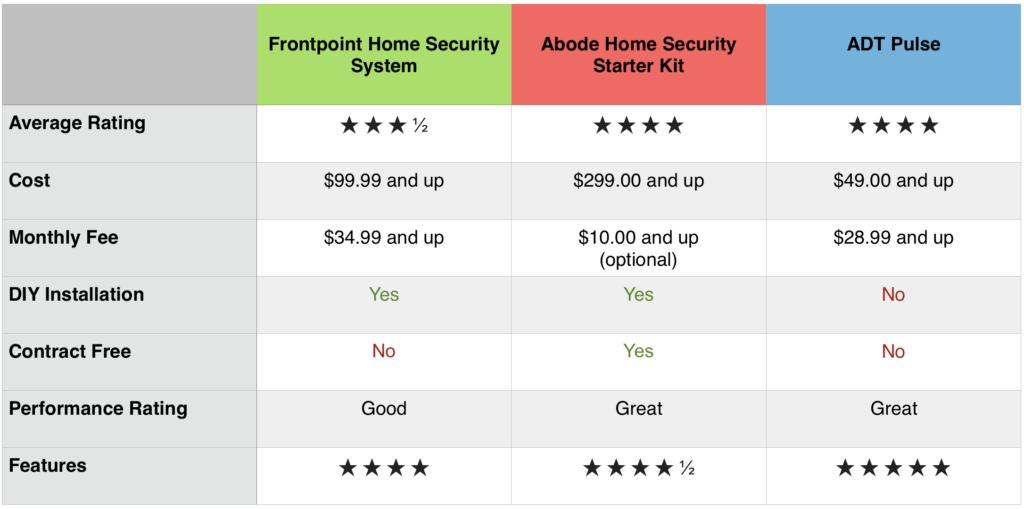Trying to choose the right home security system can be overwhelming with so many options available. That’s why it’s important to compare different brands and their features before making a decision. In this article, we will explore popular home security system brands such as Ring, Nest, Arlo, Wyze, SimpliSafe, Eufy Security, and more. We’ll also discuss the different types of home security systems, helping you make an informed choice for the safety of your home and loved ones.
Wired Security Systems
Installation
Installing a wired security system involves running cables throughout your home to connect the various components. This can be a bit more complex and time-consuming compared to other types of systems. However, once installed, wired systems are highly reliable and provide a stable connection for your security devices.
Monitoring
Wired security systems typically offer professional monitoring services. These services involve a team of experts who monitor your security system 24/7. They can quickly respond to any emergencies, such as burglaries or fires, and dispatch the necessary authorities to your home.
Cost
The cost of a wired security system can vary depending on the size of your home and the specific components you choose. While the initial installation cost may be higher compared to other systems, wired systems often have lower monthly monitoring fees. Additionally, they require less maintenance and do not rely on batteries, saving you money in the long run.
Features
Wired security systems offer a wide range of features to enhance your home’s security. These include motion sensors, door/window sensors, surveillance cameras, and alarm systems. Many wired systems also allow for remote access, enabling you to monitor your home from anywhere using a smartphone or computer.
Integration
Wired security systems can integrate with other home automation devices, allowing you to create a fully connected smart home. You can synchronize your security system with smart locks, lighting, and temperature controls to enhance convenience and efficiency. Some popular brands offering wired security systems include Honeywell Home, ADT, and First Alert.
Wireless Security Systems
Installation
Wireless security systems offer a simpler and more flexible installation process compared to wired systems. They use wireless technology, eliminating the need for extensive wire installations. You can easily place sensors and cameras wherever you need them without worrying about running cables.
Monitoring
Similar to wired systems, wireless security systems also provide professional monitoring services. These services ensure that your home is monitored round the clock, giving you peace of mind. Some wireless systems also offer self-monitoring options, allowing you to receive notifications directly on your smartphone.
Cost
Wireless security systems generally have lower installation costs compared to wired systems since no cables need to be installed. However, they may have slightly higher monthly monitoring fees. Additionally, you may need to replace batteries in your wireless devices periodically, which can add to the overall cost.
Features
Wireless security systems offer a wide range of features, including motion sensors, door/window sensors, and surveillance cameras. They often come with smartphone apps that allow you to control and monitor your system remotely. Some popular brands in the wireless security system market include Ring, Nest, and Arlo.
Integration
Wireless security systems can be integrated with other smart home devices, providing you with a seamless home automation experience. For example, you can integrate your system with smart locks to remotely control and monitor your doors. The ability to connect with other devices enhances the convenience and functionality of your security system.
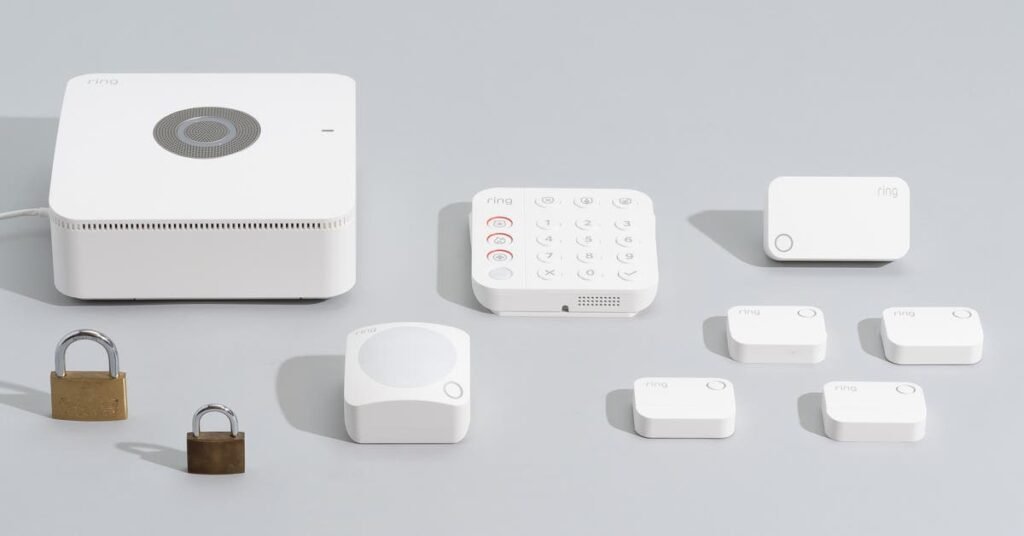
DIY Security Systems
Installation
DIY security systems are designed for easy installation by homeowners. They usually come with detailed instructions and user-friendly interfaces, allowing you to set up the system without the need for professional assistance. DIY systems are wireless and often come in kits that include all the necessary components.
Monitoring
DIY security systems typically offer self-monitoring options. Instead of relying on a professional monitoring service, you are responsible for monitoring your own system. You will receive alerts and notifications on your smartphone if any sensors are triggered or if there is a security breach.
Cost
DIY security systems are often more affordable compared to professionally installed systems and may not require monthly monitoring fees. However, keep in mind that you will need to purchase the system upfront, and some additional features or services may have extra costs.
Features
Despite being DIY, these systems offer a wide range of features to enhance your home security. You can find motion sensors, door/window sensors, surveillance cameras, and even smart home integration capabilities. Brands like SimpliSafe, Eufy Security, and Blink are well-known for their DIY security systems.
Integration
DIY security systems can integrate with other smart home devices, allowing you to control and monitor your entire home from a single app. You can integrate your security system with smart lights, thermostats, and even voice assistants for a truly connected and convenient home security experience.
Professionally Installed Systems
Installation
Professionally installed systems involve a security company sending trained technicians to install your security system. They will assess your home’s needs and strategically place components such as sensors and cameras for optimal coverage. Professional installation ensures proper setup and can be convenient, especially for complex systems.
Monitoring
Professionally installed systems often come with professional monitoring services. These services involve a team of experts who monitor your security system 24/7 and respond to any emergencies. They can contact the authorities on your behalf, providing an additional layer of protection for your home.
Cost
Professionally installed systems typically have higher upfront costs compared to DIY systems. You will need to pay for the equipment and the installation service. Additionally, there are monthly monitoring fees associated with professional monitoring services. However, the peace of mind and expertise offered by these systems may outweigh the higher cost for some homeowners.
Features
Professionally installed systems offer a wide array of features to enhance your home security. These may include motion sensors, door/window sensors, surveillance cameras with advanced video analytics, and even environmental sensors for smoke and carbon monoxide detection. Companies like Vivint, Abode, and Swann are known for their professionally installed systems.
Integration
Professionally installed systems can integrate with other smart home devices, allowing you to control and monitor your home’s security alongside other automation features. Integration options vary depending on the brand and system, but you can typically connect your security system with devices such as smart locks, smart thermostats, and voice assistants.
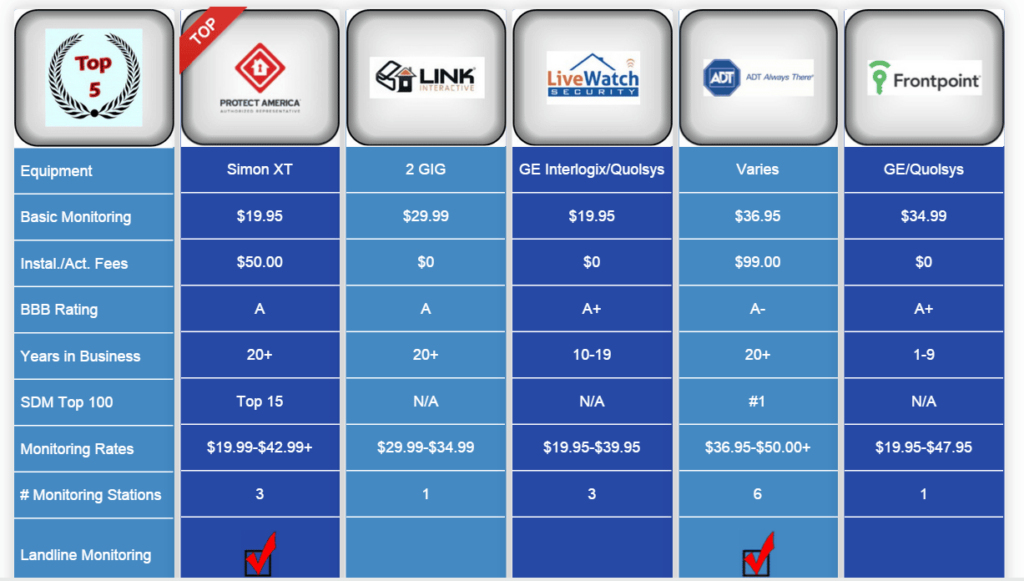
Camera-Only Systems
Installation
Camera-only systems are designed primarily for video surveillance and do not include other security components such as sensors or alarms. They usually come in wireless configurations, making installation relatively simple. You can place the cameras in strategic locations to monitor your home’s entrances, driveways, or specific areas of concern.
Monitoring
Camera-only systems primarily focus on video monitoring. They provide live video feeds that you can access through a smartphone app or computer. Some systems offer event-based recording or cloud storage options, allowing you to review footage if any suspicious activity occurs.
Cost
The cost of camera-only systems varies depending on the number of cameras and the desired features. Compared to comprehensive security systems, camera-only systems tend to be more affordable. However, keep in mind that additional costs may be associated with cloud storage, extended recording durations, or advanced camera features.
Features
Camera-only systems offer a range of features to meet your surveillance needs. These may include high-definition video resolution, night vision capabilities, motion detection, and two-way audio. Some popular camera-only system brands include Arlo, Wyze, and Reolink.
Integration
Camera-only systems can often integrate with other smart home devices to enhance your overall home security and automation experience. For example, you can connect your cameras with smart lights or a smart doorbell to create a comprehensive surveillance system. Compatibility and integration options may vary depending on the brand and system you choose.
Sensor-Based Systems
Installation
Sensor-based systems primarily focus on detecting movement or disruptions in specific areas of your home. These systems typically consist of motion sensors and door/window sensors. Installing these sensors is relatively easy, as they are often wireless and can be placed in strategic locations without complex wiring.
Monitoring
Sensor-based systems can offer both professional monitoring and self-monitoring options. If any sensors are triggered, your system will send an alert to your smartphone or directly to a monitoring center. Professional monitoring services can quickly respond to potential threats, while self-monitoring allows you to take immediate action.
Cost
The cost of sensor-based systems varies depending on the number and type of sensors you need. Generally, these systems are more affordable compared to comprehensive security systems since they focus primarily on detecting activity. Additional costs may include professional monitoring fees or cloud storage for recorded events.
Features
Sensor-based systems offer features such as motion detection, door/window open/close notifications, and audible alarms. Some advanced sensor-based systems can even differentiate between pets and human movement to minimize false alarms. Brands like Ring Alarm, Kangaroo, and TP-Link Kasa offer sensor-based security systems.
Integration
Sensor-based systems can integrate with other smart home devices, allowing you to create a secure and connected environment. For example, you can integrate your sensors with smart lights to automatically turn on when motion is detected. Integration options vary depending on the brand and system you choose, so be sure to check compatibility before making a purchase.
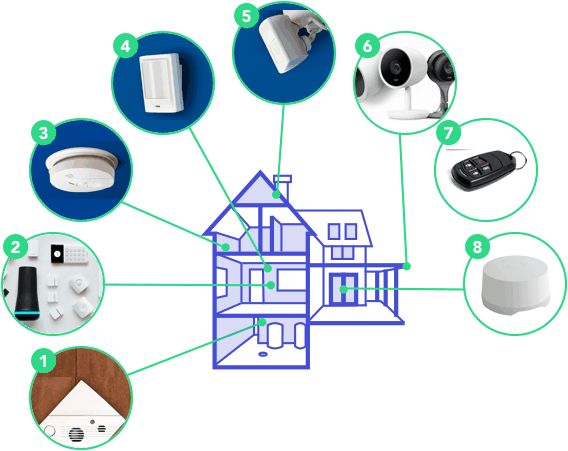
Smart Home Security Systems
Installation
Smart home security systems encompass a wide range of features and components. Installation methods can vary depending on the specific system and brand. However, many smart home security systems utilize wireless technology, making installation relatively straightforward. The system components, such as sensors, cameras, and hubs, can be easily placed and connected to create a comprehensive network.
Monitoring
Smart home security systems often offer a combination of professional monitoring and self-monitoring options. You can choose to have your system professionally monitored by a dedicated team who will respond to alarms and emergencies. Alternatively, self-monitoring options allow you to receive notifications directly on your smartphone and take appropriate action.
Cost
The cost of smart home security systems can vary significantly depending on the brand, features, and components included. The upfront cost will include the purchase of the system’s equipment. Ongoing costs may include professional monitoring fees, additional cloud storage, or integration with other smart home devices.
Features
Smart home security systems offer a wide array of features to enhance your home security and automation experience. These may include motion sensors, door/window sensors, surveillance cameras, smart locks, and voice control integration. With the ability to control and monitor your system through a smartphone or voice commands, these systems provide convenience and peace of mind. Brands like Ring, Nest, and August Home are well-known for their smart home security systems.
Integration
Smart home security systems are designed to integrate with other smart home devices, allowing you to create a fully connected and automated ecosystem. You can sync your security system with devices such as smart locks, lighting, thermostats, and voice assistants. Integration options may vary depending on the brand and system, so be sure to check compatibility before making a purchase.
Smart Doorbell Systems
Installation
Smart doorbell systems, also known as video doorbells, are designed to replace traditional doorbells while providing additional security features. Installation typically involves replacing your existing doorbell with the smart doorbell unit. Some units require wiring, while others are battery-powered and simply mount to the exterior of your home.
Monitoring
Smart doorbell systems are primarily focused on monitoring your front door. They provide a live video feed of the area outside your door, allowing you to see who is approaching or ringing your doorbell. Many systems also offer motion detection, sending alerts to your smartphone when someone enters the detection zone.
Cost
The cost of smart doorbell systems can vary depending on the brand and specific features. Factors that may affect the cost include video resolution, storage options, and additional features such as two-way audio or advanced motion detection. Brands like Ring and Nest offer popular smart doorbell options.
Features
Smart doorbell systems offer features such as high-definition video recording, night vision, two-way audio communication, and smartphone alerts. Some units also offer facial recognition capabilities, allowing you to identify familiar faces at your door. Depending on the brand and model, you may have various customization options and additional features.
Integration
Smart doorbell systems can integrate with other smart home devices for enhanced functionality. You can connect your doorbell with smart locks, enabling you to remotely unlock the door for trusted visitors. Integration with other security cameras and systems can also provide a more comprehensive surveillance setup.
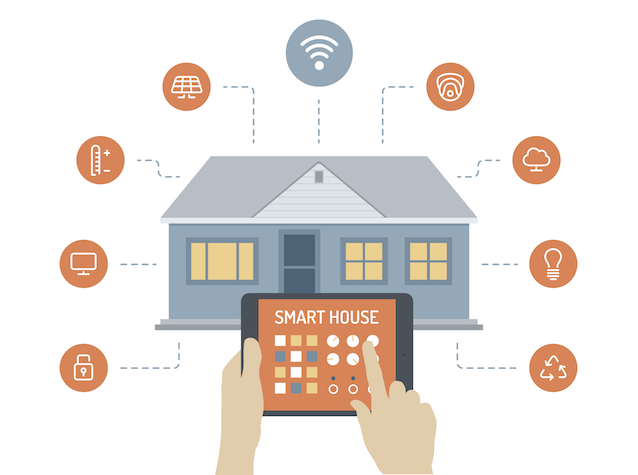
Smart Lock Systems
Installation
Smart lock systems are designed to replace traditional door locks, providing convenient access control. Installation methods can vary depending on the type of lock and your door. Some smart locks can be easily installed by homeowners, while others may require professional assistance or replacing the entire door lock mechanism.
Monitoring
Smart lock systems are primarily focused on providing secure access to your home. They often support smartphone apps that allow you to lock and unlock your doors remotely. Some systems also offer notifications and logs, allowing you to monitor who enters and exits your home.
Cost
The cost of smart lock systems varies depending on the brand, features, and type of lock. Basic smart locks can be relatively affordable, while advanced models with additional security features may come at a higher price. Keep in mind that you may need to purchase multiple smart locks depending on the number of entry points in your home.
Features
Smart lock systems offer features such as keyless entry, timed access permissions, and integration with other smart home devices. You can create personalized access codes for family members, guests, or service providers. Some locks also support biometric authentication methods, such as fingerprint recognition. Brands like August Home, Schlage, and Wyze offer popular smart lock options.
Integration
Smart lock systems can integrate with other smart home devices to enhance your home security and automation. For example, you can combine your smart locks with security cameras, allowing you to visually confirm or deny entry from your smartphone. Integration with voice assistants and other smart devices can provide convenience and seamless control of your home’s entry points.
All-in-One Systems
Installation
All-in-one systems provide a comprehensive solution by combining various security components into a single package. Installation methods may vary depending on the specific system, but they are designed to be user-friendly and easy to set up. The system usually includes a central hub or control panel, as well as sensors and cameras for complete coverage.
Monitoring
All-in-one systems offer monitoring options ranging from professional monitoring services to self-monitoring through mobile apps. Professional monitoring ensures that your system is monitored 24/7 for emergencies, with trained personnel ready to respond. Self-monitoring allows you to receive alerts, view camera feeds, and control your system directly from your smartphone.
Cost
The cost of all-in-one systems can vary depending on the brand, features, and components included. They often have a higher upfront cost compared to individual components or DIY systems. Additionally, there may be ongoing monthly fees for professional monitoring services, cloud storage, or access to advanced features.
Features
All-in-one systems typically include a range of features to provide comprehensive security coverage. These may include motion sensors, door/window sensors, surveillance cameras, alarm systems, and even environmental sensors. Some systems also offer additional features such as smoke detection and water leak sensors. Brands like Ring Alarm, Nest, and Logitech Circle offer popular all-in-one security system options.
Integration
All-in-one systems are designed to integrate with a variety of smart home devices, allowing you to create a fully connected and automated home security system. Integration options may include smart locks, lighting, thermostats, voice assistants, and more. With the ability to control and monitor your entire home from a single hub or app, these systems provide convenience, security, and peace of mind.
By considering the various types of home security systems available, you can choose the one that best meets your specific needs and provides the level of protection you desire for your home and family. Whether you opt for a wired system for its reliability, a wireless system for its flexibility, or a DIY system for its affordability, the right home security system can give you peace of mind and enhance the overall security of your home.
